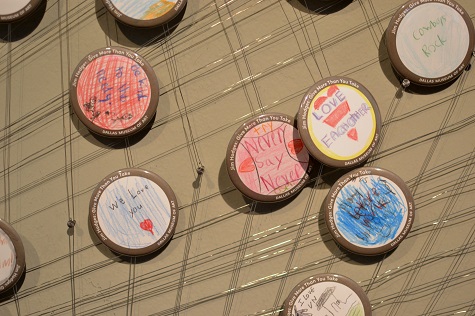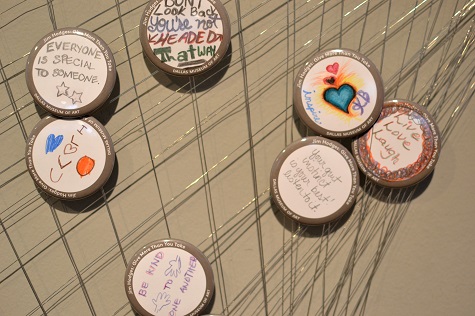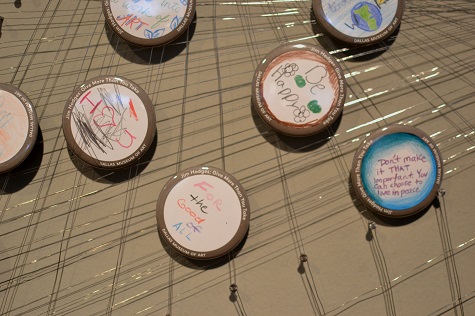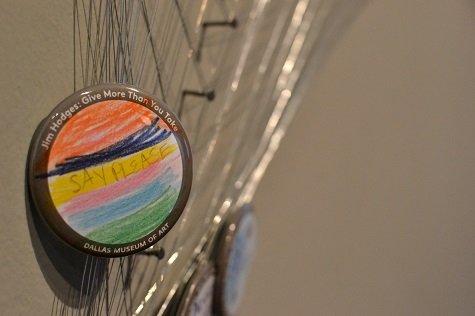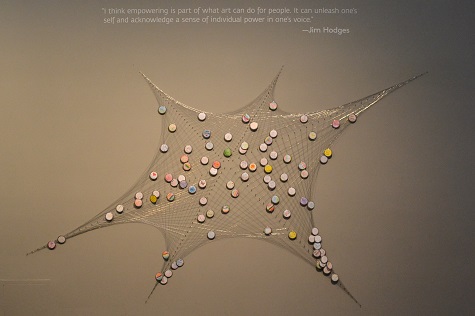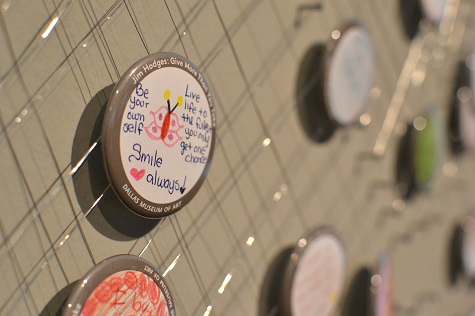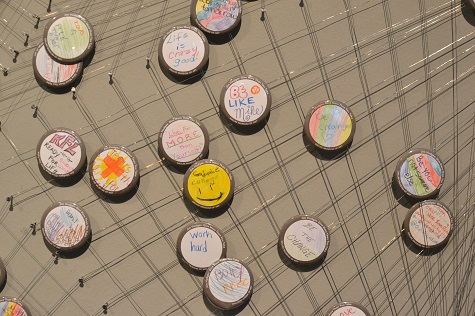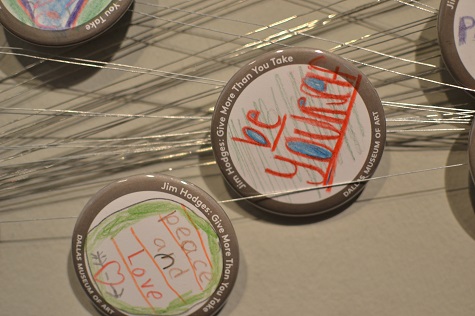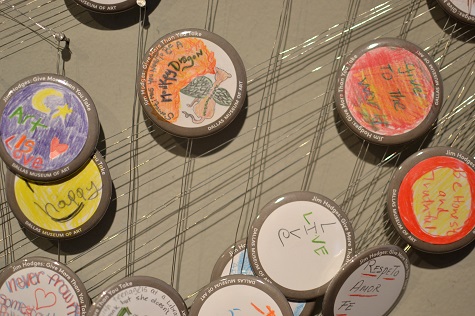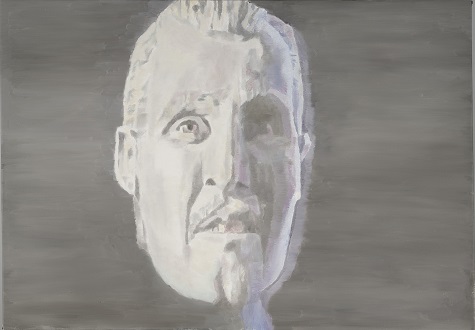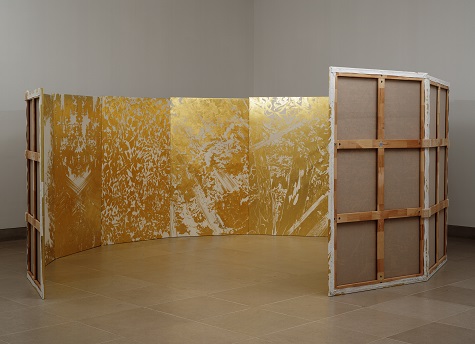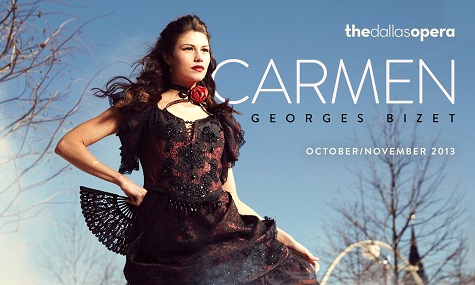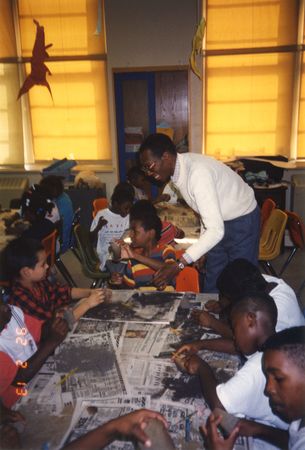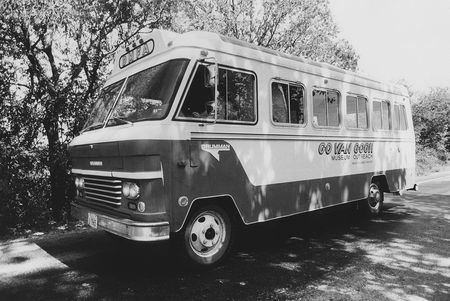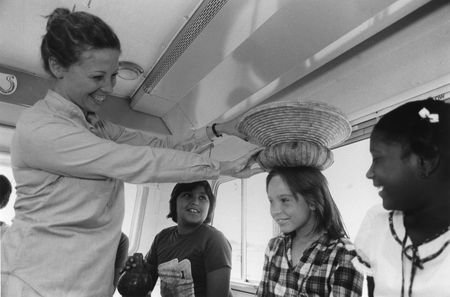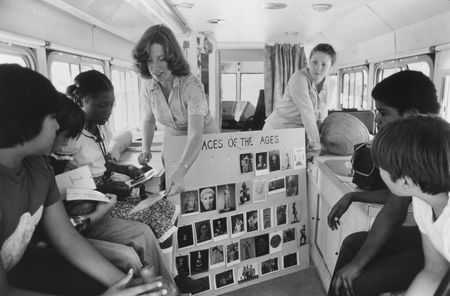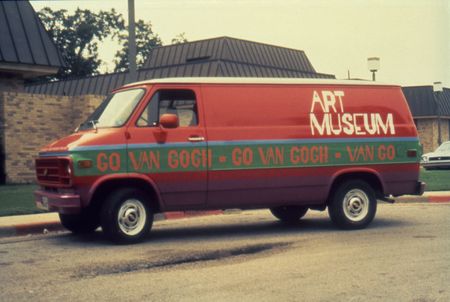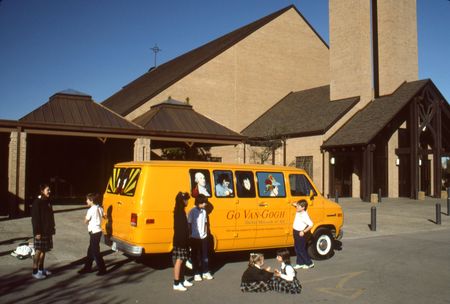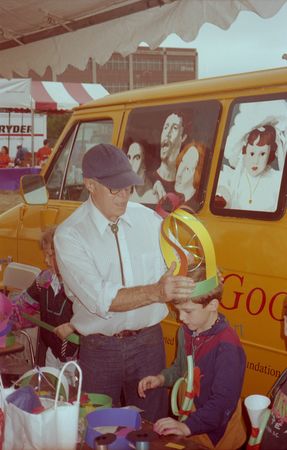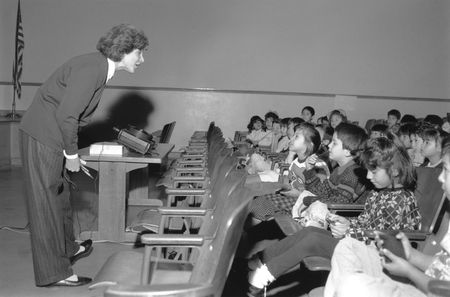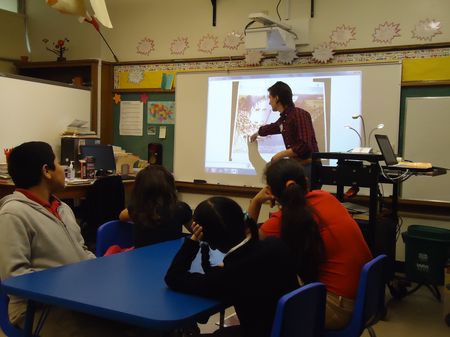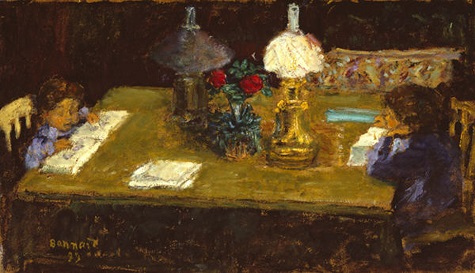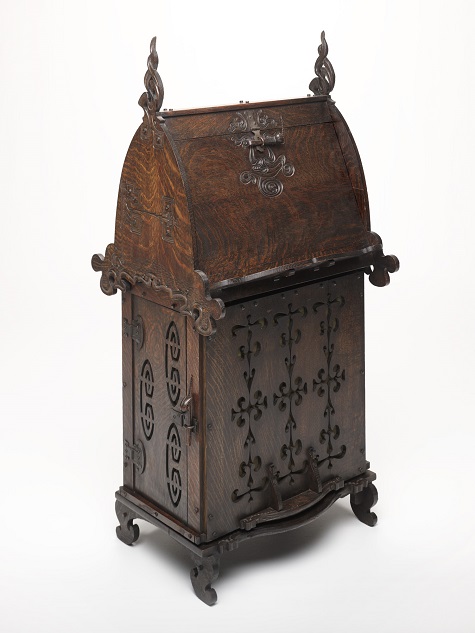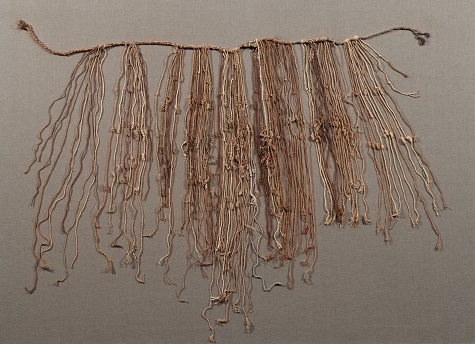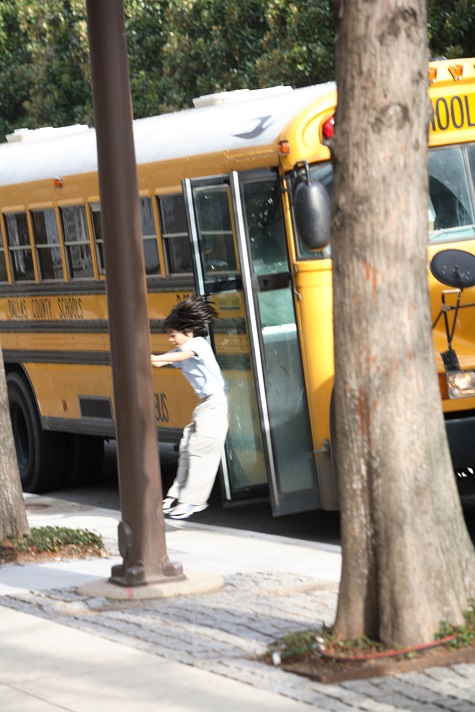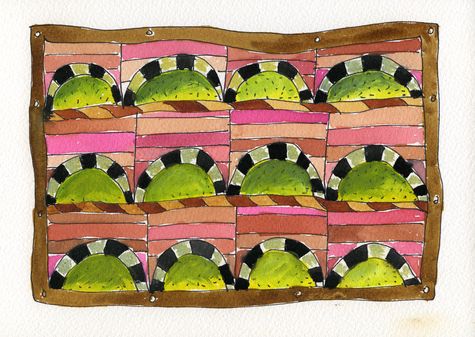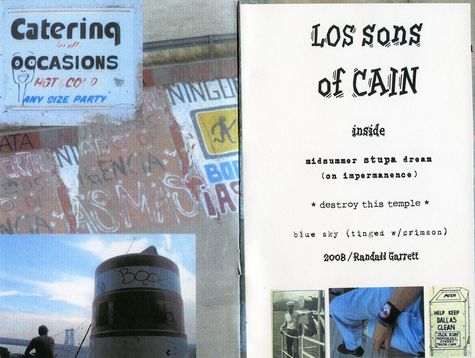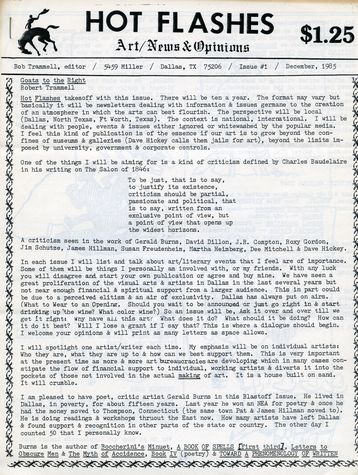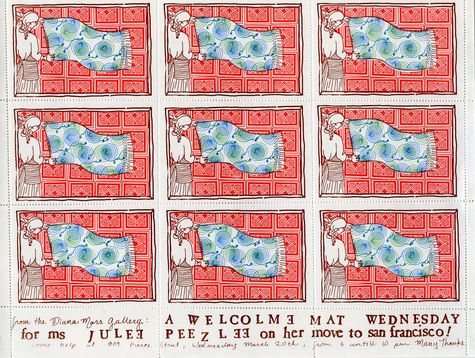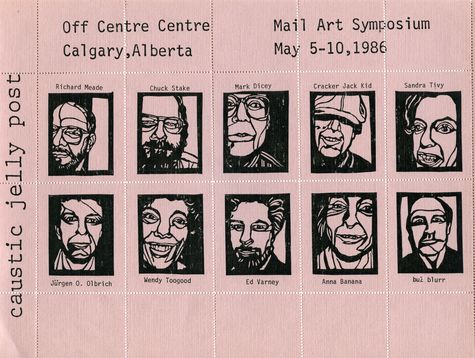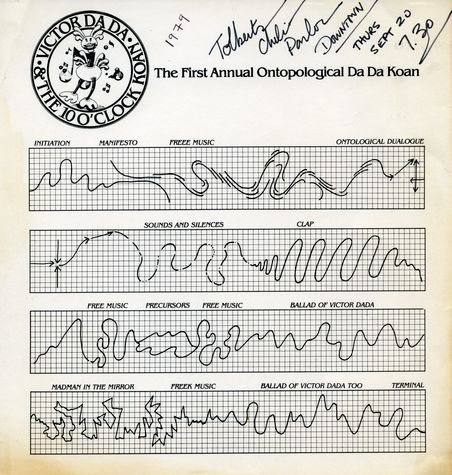
If you’ve stopped by the DMA’s Barrel Vault you have seen the Museum’s first experimental space, DallasSITES: Available Space, with art installations and programming from area artists, collectives, and educators. Oil and Cotton, located in Oak Cliff, has an interactive project room where visitors can participate in free workshops and drop-in activities. We caught up with their co-founders to see how the first week has gone:

DMA: What does it mean to Oil and Cotton to be involved in the DMA’s first experimental space, DallasSITES: Available Space?
Oil and Cotton: It is a huge honor for us to be exhibiting in DallasSITES: Available Space. It feels great to be recognized by our peers, whom we respect so much. And it is validating to be seen for exactly what we are – an artwork that serves through education.
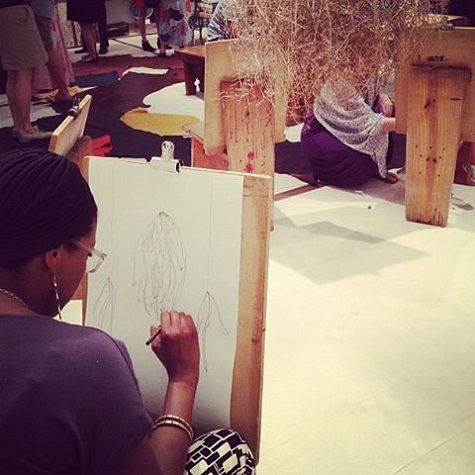
DMA: What can visitors expect in the Oil and Cotton project room?
O + C: They can expect to use it however they see best. We mean for it to be inviting for all ages at all levels of experience. I had a great conversation with a teenage boy from Oklahoma over the weekend. He was with a tour group who were feeling a bit out of place, insecure, and self-conscious. The other teens were teasing each other about not being able to make art (translation: I don’t belong here.) He leaned towards me and subtly gestured to the open weave bulb baskets that had been made earlier by a class, and whispered that he thought they might be good for catching fish in a river. EXACTLY! We got into a conversation about knotting and netting, using hog gut, and then he made the bold decision to ask me to show him how to weave. In that moment, he belonged. That is the essence of our educational mission.
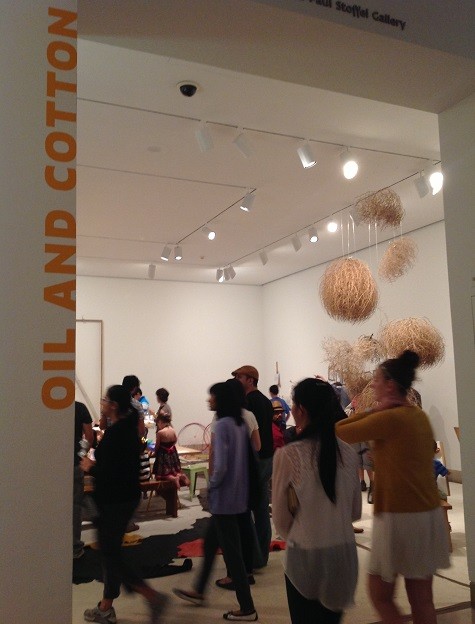
DMA: What was the opening like for your organization last Friday during Late Night? Did you anticipate the crowds?
O + C: Um no. It was utterly insane in a fantastic way. We naively set up drawing activities, thinking for the first night, we’d keep it simple. Before we knew it, the whole place was blowing up with weaving, sculpting, collage, sewing, you name it. All ages, including artists, curators, and toddlers, were working side by side at a huge table covered in donated supplies. I heard someone comment that he couldn’t tell where the exhibition ended and the education began. Yippee!

DMA: Have you seen anything that may inspire your own practice back at your studio in Oak Cliff?
O + C: Absolutely. More collaboration, more getting out there and serving more people, and more autonomy. It is so exciting to meet people who have never heard of us and hear from them what they might want to contribute.
DMA: What are the DMA visitors’ reactions to DallasSITES: Available Space and the Oil and Cotton area?
O + C: At first, people engage with the spectacle – thanks to our architect Esther Walker, who captured the feel of our place with her ingenuity and labor of love. Then they wander in and realize it is there for them. They seem to appreciate the options. Parents can make something or just sit and relax, teens can draw with nice materials in a studio, little kids can make forts and roll around in the “park” of leather hides and circle looms made by my daughter. And everyone is invited to hang work on the wall, participate in free classes, ask questions, and use the studio when the Museum is open.
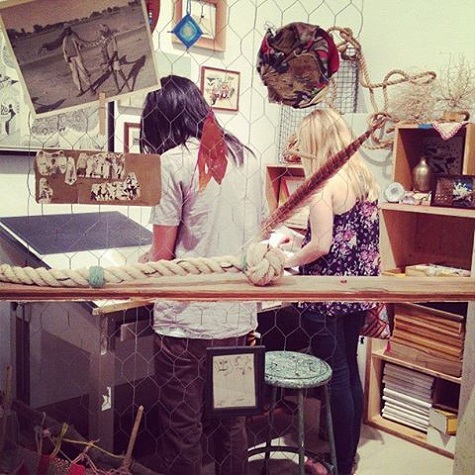
DMA: Have you “met” your neighbors in the exhibition?
O + C: We borrowed a lot of cups of sugar during installation! We enjoyed watching Brandon Kennedy install his book collection and Homecoming! win the hardest working art collective in show business award. My daughter gave a sculpture to Jeffrey Grove (smart move honey!), we got to spend a whole lot of time getting to know the super accommodating DMA staff. It is so special for us all to inhabit the Museum, which has prior to this exhibit a bit of an untouchable space for local artists. Education is of course another story, as they are always reaching out into the community and providing opportunities for Dallas artists. But being in this exhibition, in the same galleries that housed Mark Bradford, Cindy Sherman, and Jim Hodges (!), is a new and exciting opportunity for us. It gives participants a sense of belonging to this city and being recognized for their merits. I hope this leads to more emerging and local artist exhibitions throughout the year. And even more, I hope it emboldens the Dallas art community to launch projects, push for press, and truly making a living as artists here.
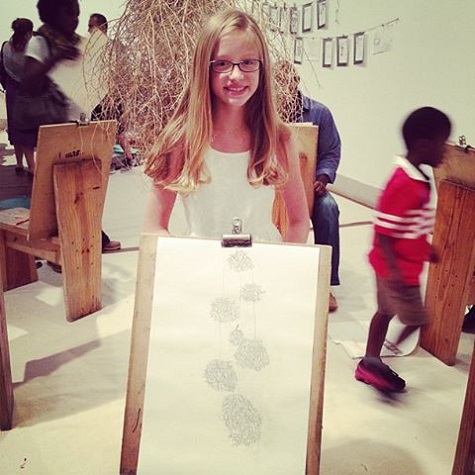
We asked visitors to give us a sentence or two describing their personal experiences in the Oil and Cotton Project Room. See below:
“The Oil & Cotton project room was so inspiring and beautiful! I loved being able to bring in my late Gramma’s collection of yarn and contribute in some small way to it all. I know it would have made her absolutely giddy to see some of her supplies used at the DMA! I love how the O + C team created such a wonderful space where the community can come in, create something of their own or contribute to what is already there, and then leave completely inspired to do something at home.” -Jillian Ragsdale
“It’s a rare experience indeed to discover oneself a space that is both as warm and as energetic as the one that Oil and Cotton have crafted at the DMA. (In fact, perhaps its better, to discuss the many spaces within their own space, but that would constitute and essay rather than a few remarks.) I think that the installation works, however, because it is literally at work, engaged in the seriously playful business of supporting creative endeavor. Oil and Cotton’s DMA installation is neither solely gallery nor studio. Public as well as intimate, what Oil and Cotton offers at the DMA is a vital demonstration of how we might imagine not so much what but the combined how and why of what artists do, and what such doing means in terms of simply living, and living well for the sake of everyone.” -Joe Milazzo
“Oil and Cotton created a beautiful, active, yet peaceful space. It is a room I’d like to hang out in. I am so happy and impressed the DMA gave O&C a chance to express themselves freely.” -Kelly Mitchell
“The Oil and Cotton installation at the recent DMA DallasSites exhibition was breath of fresh air. Being able to create and stimulate ideas in a museum context surrounded by a strong artistic community was inspiring. I love the organic well thought out context that O&C provides for people of any age to engage and learn about art practices.” -Ariel Saldivar
“As I’ve come to expect from their continual efforts, Oil and Cotton has once again provided a space for creative exploration, enriched by the affection for detail and caring guidance and by the knowledge and warmth consistently demonstrated by the owners, Kayli and Shannon, as well as by the artists they choose to involve.” -Sally Glass
“I was blown away by the excitement of the Friday night opening of DallasSites. Oil and Cotton has always had a very sincere and authentic atmosphere in their Oak Cliff location, and that same feeling is evident in the DMA gallery space. I felt welcomed and energized by the design of the work space and the presence of everyone attending the Late Night” -Rachel Rushing


